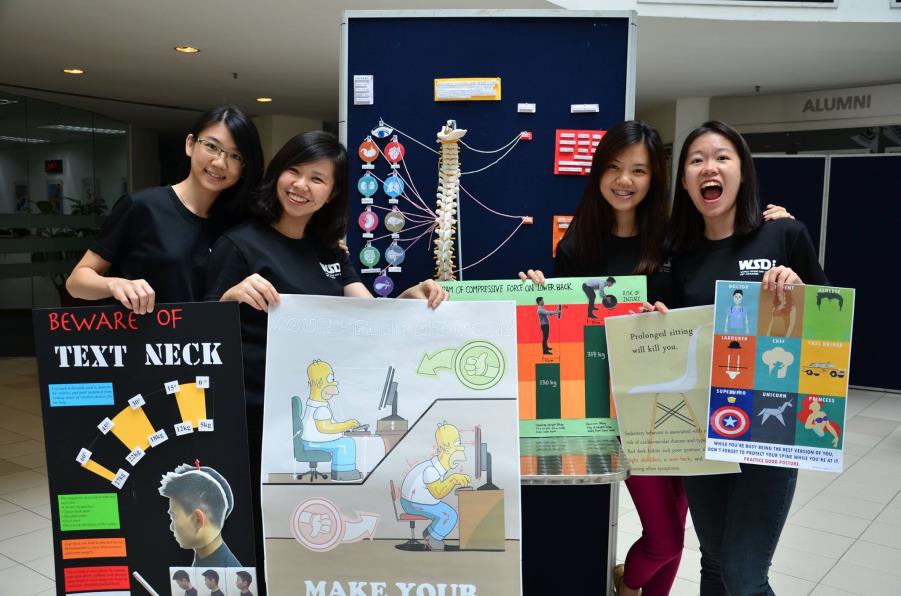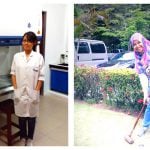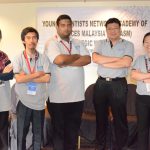International Medical University (IMU)’s World Spine Day activities organised by its Semester 4 Chiropractic students won first prize in the chiropractic educational institutions category at the 2015 World Spine Day competition, an achievement that had brought great joy to the 5 cohorts of IMU Chiropractic students. The competition had grouped entries into three categories: professional associations, chiropractic educational institutions, and individuals/private practices. World Spine Day (WSD) is celebrated each year on 16 October. An initiative of the Global Alliance for Musculoskeletal Health, the World Federation of Chiropractic (WFC) has coordinated World Spine Day activities since 2010 and runs an annual competition attracting entries from the worldwide profession. The theme this year being “Your Back at Work”. 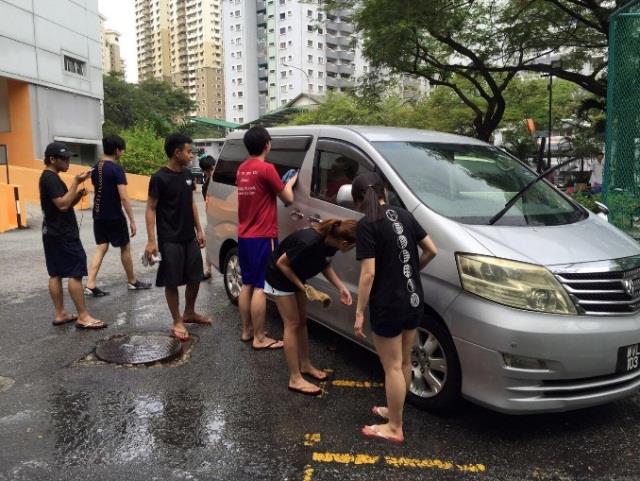
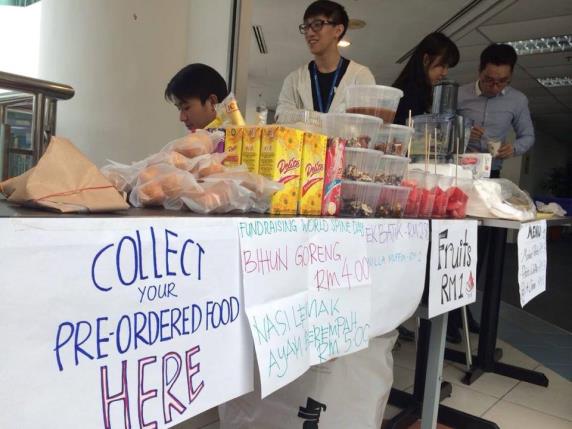 Every year, in IMU, it has been a tradition for the Semester 4 Chiropractic students to be the main organisers of the World Spine Day event in October. Our brainstorming sessions and discussions started as early as April, followed by a car wash, World Spine Day T-shirt sales, and food sales in the later months leading to the day of the event. The fund-raising activities were an absolute success that helped cover our event costs, and at the same time allowed us to reach out to people in the community to inform them about World Spine Day 2015. In addition to these initiatives, we made social media as a platform to spread awareness by creating a World Spine Day event page on Instagram and Facebook. Some posters and photographs were posted in social media to inform the public of World Spine Day and what it is about. We realized that in this age and time, social media can play a powerful role as we had more than 140 followers on both our social media accounts, which gave us a good way to communicate and share our information to a larger audience.
Every year, in IMU, it has been a tradition for the Semester 4 Chiropractic students to be the main organisers of the World Spine Day event in October. Our brainstorming sessions and discussions started as early as April, followed by a car wash, World Spine Day T-shirt sales, and food sales in the later months leading to the day of the event. The fund-raising activities were an absolute success that helped cover our event costs, and at the same time allowed us to reach out to people in the community to inform them about World Spine Day 2015. In addition to these initiatives, we made social media as a platform to spread awareness by creating a World Spine Day event page on Instagram and Facebook. Some posters and photographs were posted in social media to inform the public of World Spine Day and what it is about. We realized that in this age and time, social media can play a powerful role as we had more than 140 followers on both our social media accounts, which gave us a good way to communicate and share our information to a larger audience. 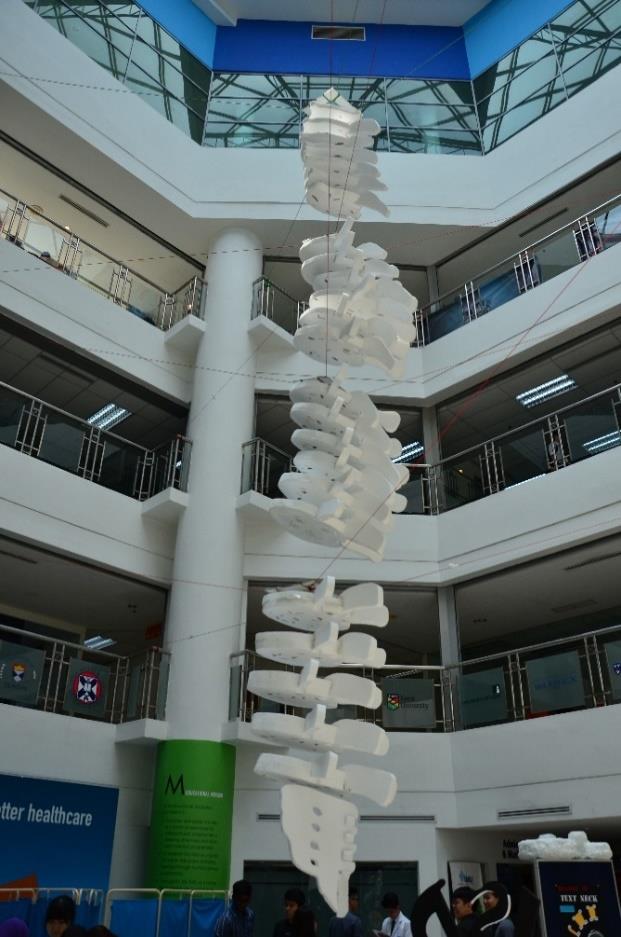
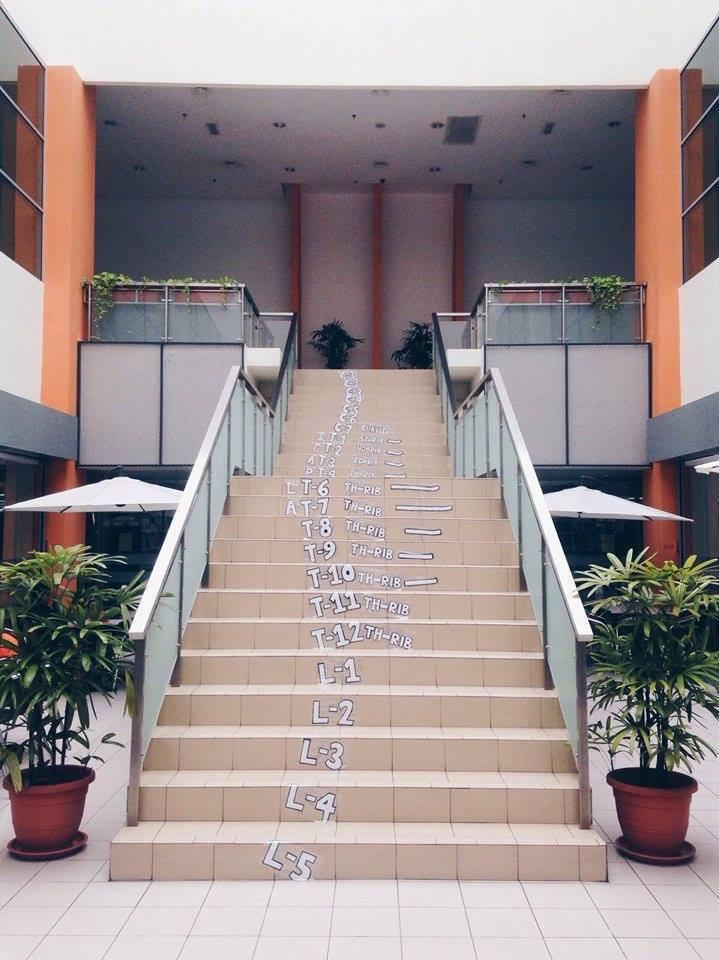
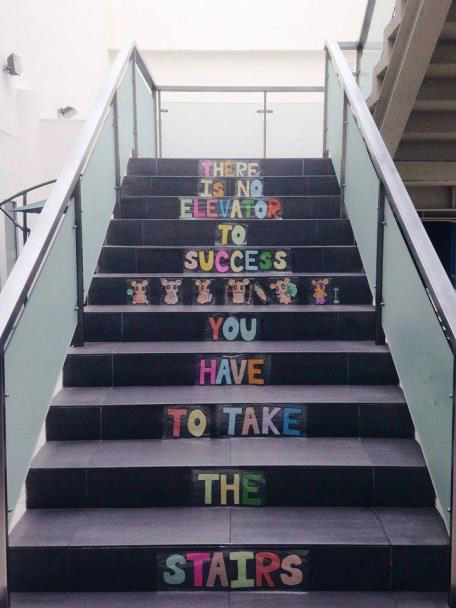 In the two days of event, we garnered loads of attention by hanging a 3D vertical spine, which consists of 33 vertebrae from the 3rd floor to the ground floor of the University. The 3D spine was designed and took three months to make before the main event. A globe with the ‘WSD’ word was made and a cartoon character spine cutout, which we named ‘spine minion’, was used as a photo booth in our event.
In the two days of event, we garnered loads of attention by hanging a 3D vertical spine, which consists of 33 vertebrae from the 3rd floor to the ground floor of the University. The 3D spine was designed and took three months to make before the main event. A globe with the ‘WSD’ word was made and a cartoon character spine cutout, which we named ‘spine minion’, was used as a photo booth in our event. 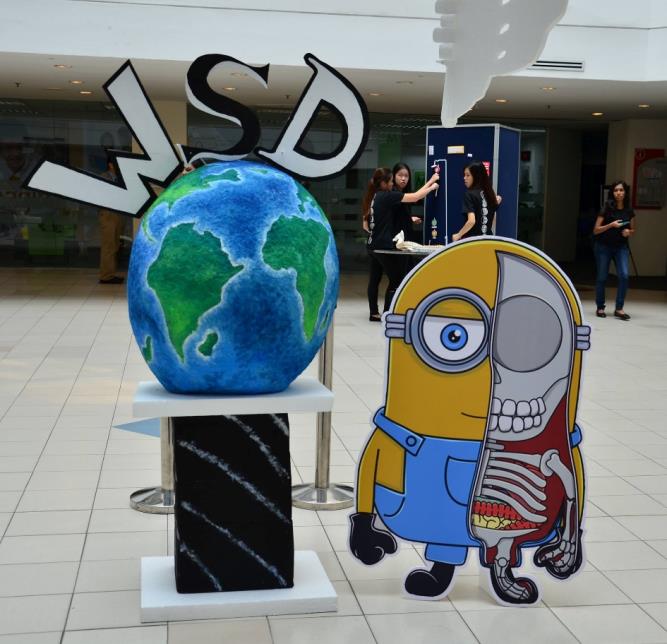 We wanted our event to be as interactive as possible, thus the photo booth allowed people to take their best possible version of a ‘spine selfie’. These were the main attractions for our event. At the end, we saw a lot of people visiting the photo booth and took pictures with the 3D spine and the WSD globe.
We wanted our event to be as interactive as possible, thus the photo booth allowed people to take their best possible version of a ‘spine selfie’. These were the main attractions for our event. At the end, we saw a lot of people visiting the photo booth and took pictures with the 3D spine and the WSD globe. 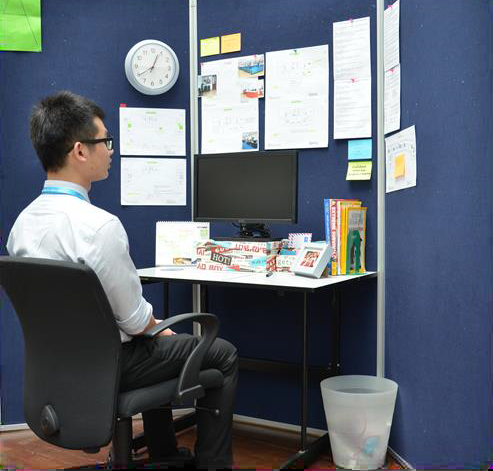 In relation to the ‘Your Back at Work’ theme, there was an ergonomics booth made, in which, examples of two different types of working environment was created. This helped raise awareness amongst the university students and staff members about their spine and sitting posture when in their working environment. At the booth, participants were allowed to sit and experience both of the working desk environments. They were also told to observe how the different settings changed or affected their posture and comfort.
In relation to the ‘Your Back at Work’ theme, there was an ergonomics booth made, in which, examples of two different types of working environment was created. This helped raise awareness amongst the university students and staff members about their spine and sitting posture when in their working environment. At the booth, participants were allowed to sit and experience both of the working desk environments. They were also told to observe how the different settings changed or affected their posture and comfort. 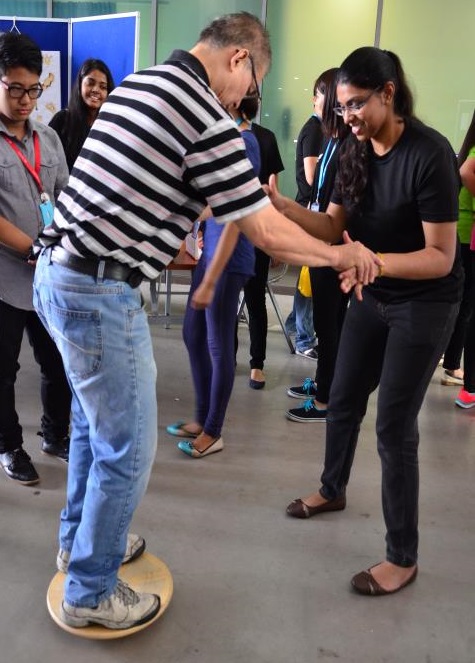 Besides that, some games were held in that two days event. This was made as a part of outdoor activities. Interesting games, which related to the spine and health, such as the ‘Spinal Dart’ game was organised. The main purpose of the game was to increase participants’ anatomy knowledge of our spine. Fitness challenges such as push-up, vertical leap, squat and planking were held to encourage people to stay physically active. Last but not least, the wobble board game where it challenges participants’ balance and coordination was done during the event. A special area with free spinal screening was held. We had three booths, which people had to go through, all served their specific purpose in screening for spinal conditions. The first booth was postural analysis where our chiropractic students did a routine check on the participants’ body postures. Then, the participants were brought over for the GALS assessment booth where their gait and alignment were assessed. This method was used to detect any locomotor abnormalities and functional disability in a patient.
Besides that, some games were held in that two days event. This was made as a part of outdoor activities. Interesting games, which related to the spine and health, such as the ‘Spinal Dart’ game was organised. The main purpose of the game was to increase participants’ anatomy knowledge of our spine. Fitness challenges such as push-up, vertical leap, squat and planking were held to encourage people to stay physically active. Last but not least, the wobble board game where it challenges participants’ balance and coordination was done during the event. A special area with free spinal screening was held. We had three booths, which people had to go through, all served their specific purpose in screening for spinal conditions. The first booth was postural analysis where our chiropractic students did a routine check on the participants’ body postures. Then, the participants were brought over for the GALS assessment booth where their gait and alignment were assessed. This method was used to detect any locomotor abnormalities and functional disability in a patient. 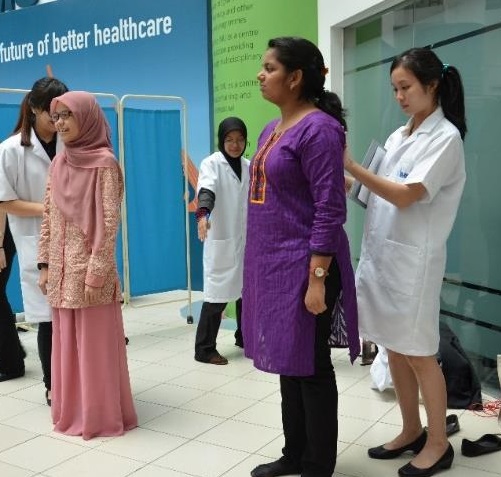
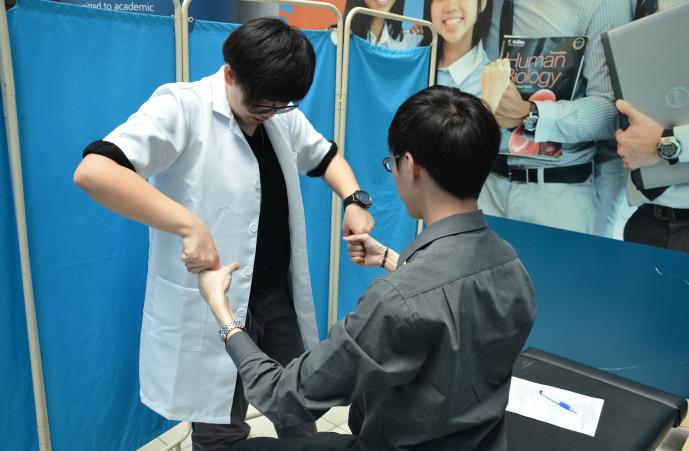
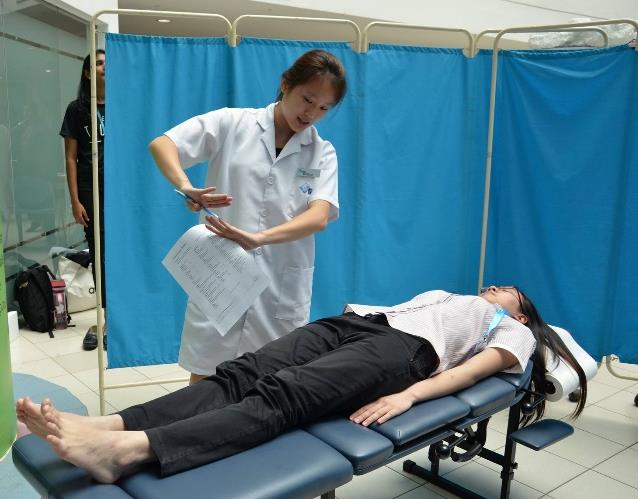 The outcomes from the assessments were then recorded in a Chiropractic Examination Form. Finally, the participants visited the consultation booth together with the examination form to seek advice from our final year chiropractic students who gave more information about their condition and whether or not they needed to seek help from the chiropractic clinic. This screening involved the Semesters 2, 4 and 8 chiropractic students, all of which served on a voluntary basis. At the end of the event, we were contented to have roughly 170 participants visiting the Spinal Screening activity. Besides that, in order to make the event more exciting and appealing, we offered those who participate in our event a 10% reduction for the coffee and drinks which they can buy from our famous cafe outlet in our university campus. This helped encourage students to post on any of their social media accounts about the World Spine Day and garner more attention for the event.
The outcomes from the assessments were then recorded in a Chiropractic Examination Form. Finally, the participants visited the consultation booth together with the examination form to seek advice from our final year chiropractic students who gave more information about their condition and whether or not they needed to seek help from the chiropractic clinic. This screening involved the Semesters 2, 4 and 8 chiropractic students, all of which served on a voluntary basis. At the end of the event, we were contented to have roughly 170 participants visiting the Spinal Screening activity. Besides that, in order to make the event more exciting and appealing, we offered those who participate in our event a 10% reduction for the coffee and drinks which they can buy from our famous cafe outlet in our university campus. This helped encourage students to post on any of their social media accounts about the World Spine Day and garner more attention for the event. 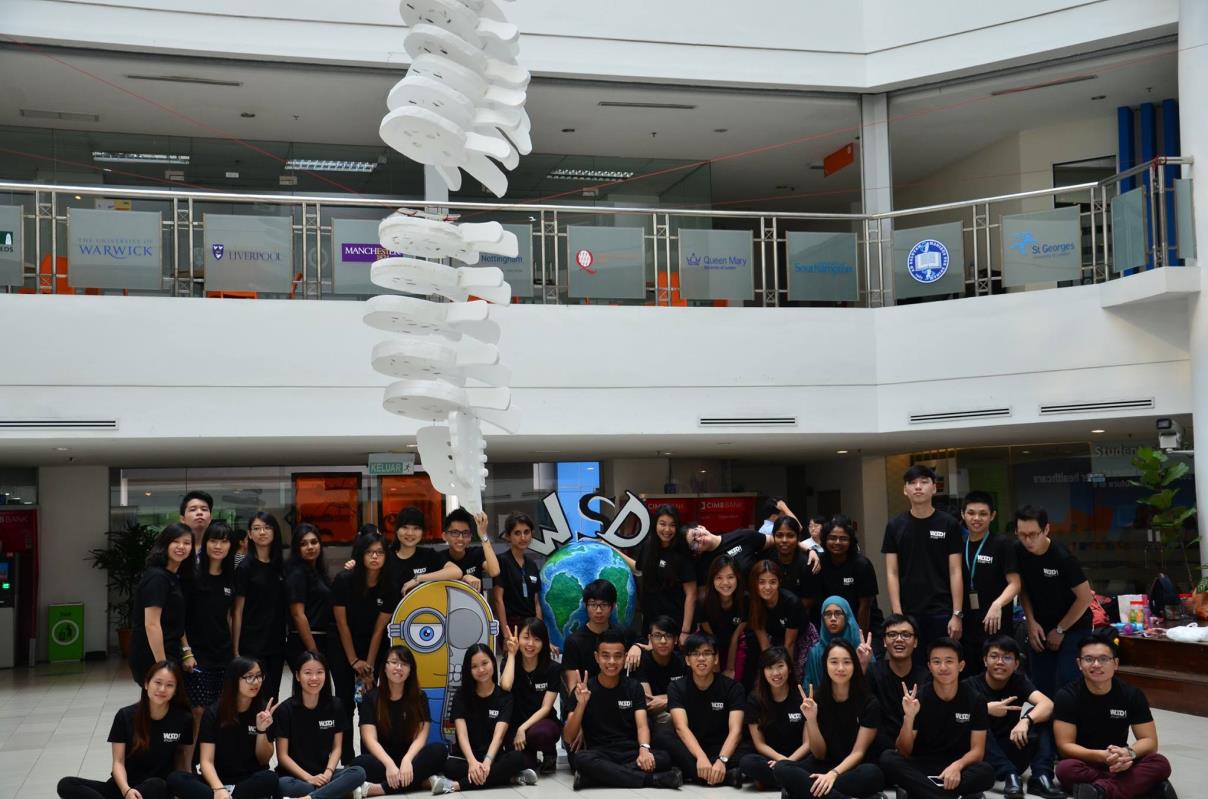
We hope that this win will encourage others to take part in World Spine Day competition in the following years to come. We have been so encouraged to hear that many of the students and faculty members only became aware of WSD through our event this year and have felt that they have learned a lot more about it. Many staff members from University have since taken the initiative to use the stairs and try to be more physically active. We are so honored to organise this meaningful event in which we are truly passionate about.
This article was prepared by Wong Vi Vien and edited by Jonathan Tiong Liang Thye. Related stories: World Spine Day Contest 2012 – IMU students win 2nd Prize! Creating Spinal Health Awareness among IMU Staff and Students on World Spine Day 2013 Learning about Spinal Health on World Spine Day 2014




